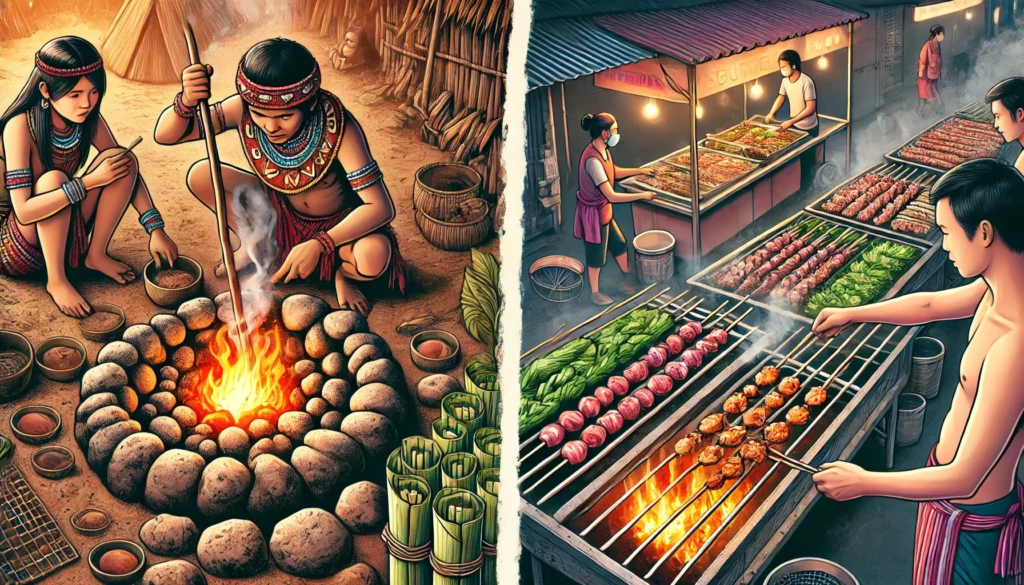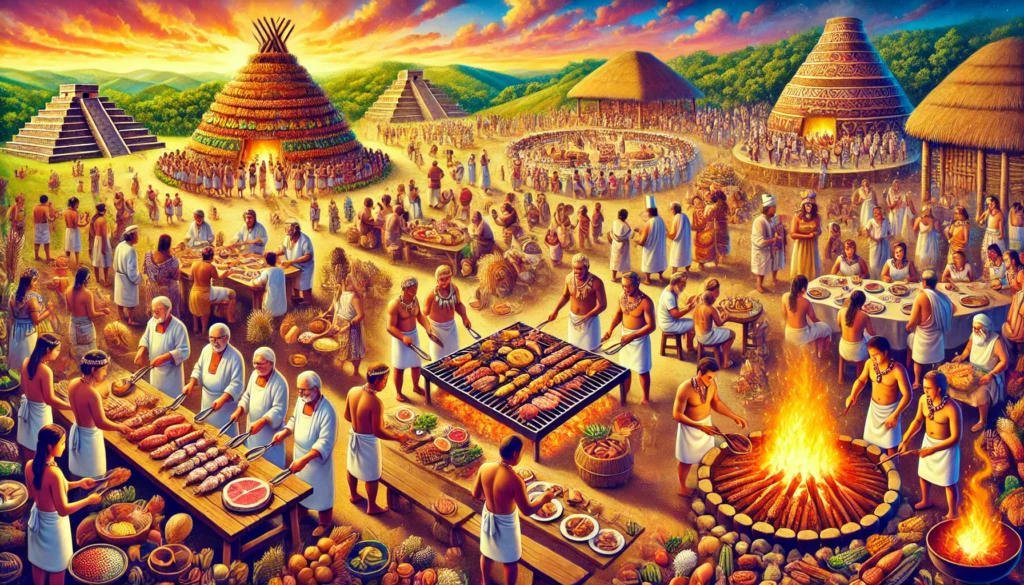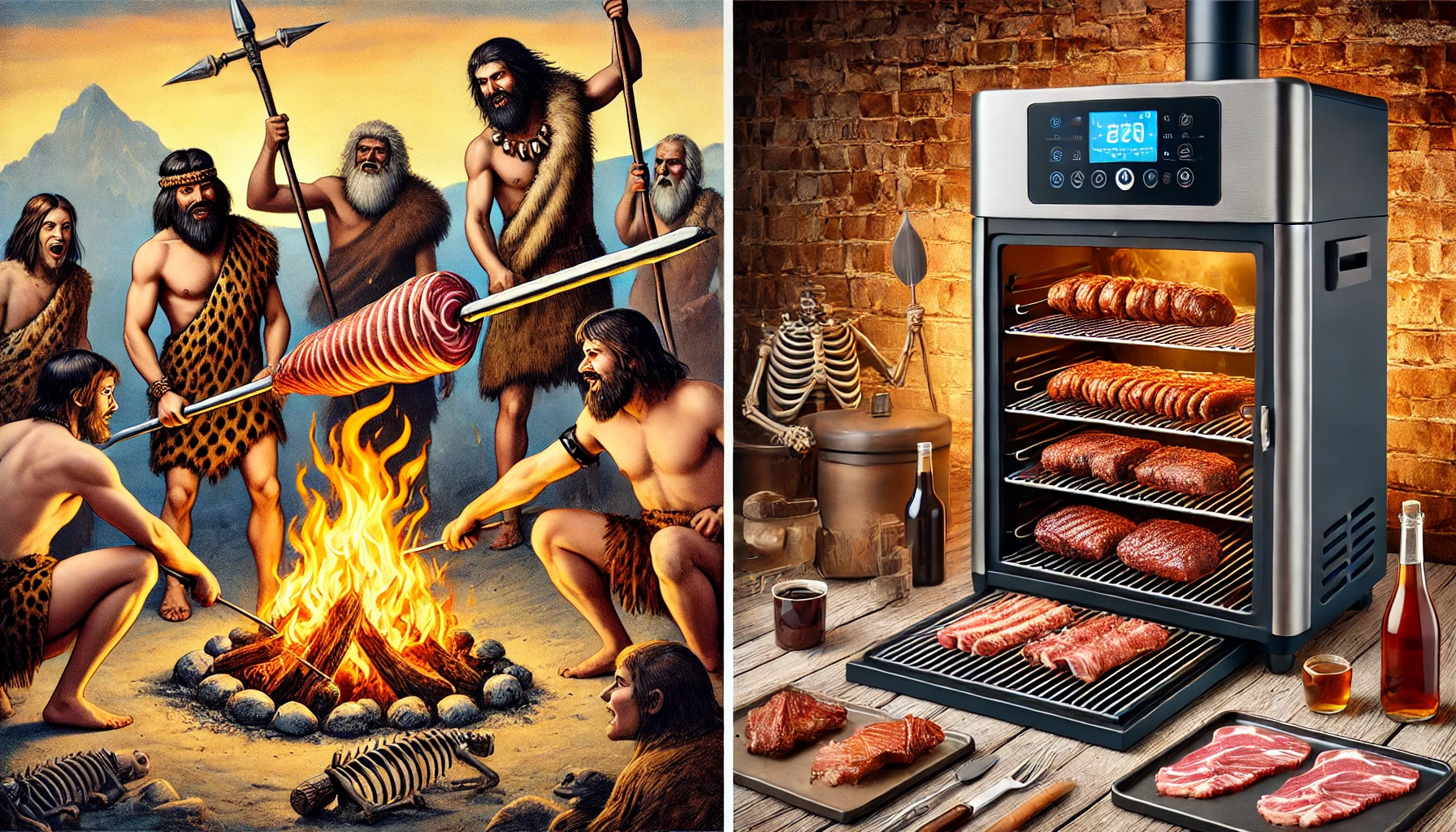
Grilling isn’t just about sizzling meats and popping veggies. It’s an age-old tradition that ties us back to our roots. Imagine our ancestors, discovering the charm of fire—what a game-changer! Cooking over open flames wasn’t a weekend gig for them; it was a daily necessity that molded cultures and culinary boundaries.
Throughout history, different civilizations have approached grilling with unique techniques. From the simple spit-roasting of prehistoric hunters to the intricate methods involving stones, wood, and even clay, each method has a story to tell. It’s fascinating how these ancestral practices have survived and evolved, pulling influences from each unique environment.
Let’s think about geography’s role. The landscape often dictated available resources, which in turn influenced grilling methods. Coastal communities might have perfected grilling fish using driftwood, while those in forested areas developed wooden skewer techniques. Every geographical quirk added a different flavor to the grill’s story.
Today, uncovering these historic methods can enrich our current cooking practices and even revive a few past traditions. By exploring these origins, we’re reminded that even the most modern grill owes its existence to ancient innovations. So, when you next fire up the grill, think of the legacy you’re upholding.
From Stones to Skewers: Diverse Tools in Ancestral Grilling

When it comes to grilling, tools matter and our ancestors had quite the toolkit. Let’s kick things off with the indigenous tribes who knew their way around stone grilling. Hot stones weren’t just for foot massages; they were perfect heat conductors for cooking up a feast. Talk about innovation!
Swing over to Southeast Asia, where bamboo skewers became a staple in grilling. These handy little tools were not only sustainable but added a subtle woody flavor to whatever was being cooked. Genius, right?
Ancient Middle Eastern societies took things for a spin with rotisserie methods. Rotisserie gave the whole “slow and steady” approach a whole new meaning, ensuring meats were juicy and evenly cooked. They were the real MVPs of multitasking.
And we cannot forget the clay and earthen ovens used by various native cultures. These ovens, dug into the earth or molded into vibrant shapes, were early versions of today’s omnipresent barbecue grills. They packed in heat, retained moisture, and delivered meals that were both earthy and sumptuous.
Understanding the variety of ancestral grilling tools can teach us a thing or two about resourcefulness and creativity. We’re talking techniques that not only shaped culinary practices but also issued a manual on making the most with what you have. Next time you grill, think about adding a touch of history with a stone or skewer; turning your cooking into a conversation starter that bridges the modern table to ancient fondness.
Flavor Profiles: How Ancestral Methods Created Unique Taste Experiences
Ancestral grilling was all about mastering flavors. Imagine the transformation as raw ingredients met fire and smoke, often after a good soak in marination magic. Mixing herbs and spices wasn’t just about taste; it was about creating identity on a plate.
The art of marination is a tale as old as time. Different regions devised their own secret sauces, harnessing the power of herbs, citrus, vinegar, and oils to tenderize and infuse flavors. These concoctions weren’t just culinary genius; they were early experiments in food chemistry.
Ever thought about the role smoke played? Smoke wasn’t just a byproduct of grilling—different woods and fires added layers of flavors and aromas that varied across cultures. Some went for a sweet and nutty driftwood vibe, while others opted for robust, earthy hardwoods, turning simple meals into flavor-packed experiences.
In many cultures, grilling was paired with fermentation to bring out unique taste profiles. Think of the tangy twist of fermented goods accompanying grilled delights, enhancing freshness and complexity in every bite.
Exploring ancestral flavor profiles opens up a world of possibilities for today’s grill enthusiasts. You’re not just following recipes; you’re capturing story-rich flavors handed down through generations. Next time, why not experiment with marination and smoke styles that echo these time-tested traditions and see how they transform your grilling game.
Cultural Rituals: Grilling As a Social and Spiritual Event

Grilling wasn’t just a cooking method; it was the heartbeat of many cultures’ social and spiritual lives. Picture this: communities gathering around fire pits, sharing stories, laughter, and food. Grilling brought people together, symbolizing kinship and cooperation, and these gatherings often went beyond mere sustenance.
In many traditions, grilling was a ceremonial activity. Harvest festivals, religious rites, and even rites of passage were marked by the communal preparation and sharing of grilled meals. With each sizzle and pop, these events turned food into a form of expression and connection, providing a taste of the past to honor ancestors and traditions.
Fire, a transformative element, held a profound symbolic place in ancestral communities. It wasn’t just about heat—it represented life, energy, and renewal. Shared around a grill, food became a medium to connect the living with the spiritual, bridging earthly and divine realms in a kind of culinary reverence.
Fast forward to today, and you’ll see grilling still holds that magnetic pull, though it’s often more about the social than the spiritual now. Backyard barbecues and cookouts serve as modern echoes of these ancient customs, preserving that same sense of togetherness and festivity.
Understanding these cultural rituals enriches our appreciation for grilling. It reminds us to see beyond the process and into a tradition that unites history, community, and celebration. Whether spiritual or simply social, the essence of grilling remains, making our meals something special, like the ancestors intended.
Legacy in Modern Kitchens: How Ancestral Techniques Influence Today’s Grilling Culture
Today, grilling goes way beyond a cooking technique; it’s an homage to the legacy of our ancestors. As modern cooks, tapping into these age-old methods can bring something extra to the table—both in flavor and authenticity.
We’ve seen a resurgence of traditional techniques, like the use of rotisseries and clay ovens, finding their way back into contemporary culinary practices. And it’s not just for nostalgia; these methods bring out distinct flavors that modern equipment sometimes can’t deliver. It’s like giving your taste buds a passport to the past.
Fusion dishes especially thrive on ancestral influences. Chefs and home grillers alike are blending old-world techniques with new-world ingredients. The results? Exciting dishes that honor tradition while introducing fresh innovations.
Beyond taste, these techniques carry stories. When you understand the narratives behind grilling traditions, meals take on deeper meanings. It’s about connection—connecting with heritage, with the environment, and with the people around us, all through the simple act of cooking over fire.
As you fire up your grill out on the deck or backyard, try incorporating an old technique. Whether using a skewer or letting smoke do its thing, these nods to history boost the experience. And with today’s focus on sustainability, taking cues from our ancestors might just point you toward greener, more conscious grilling choices.

